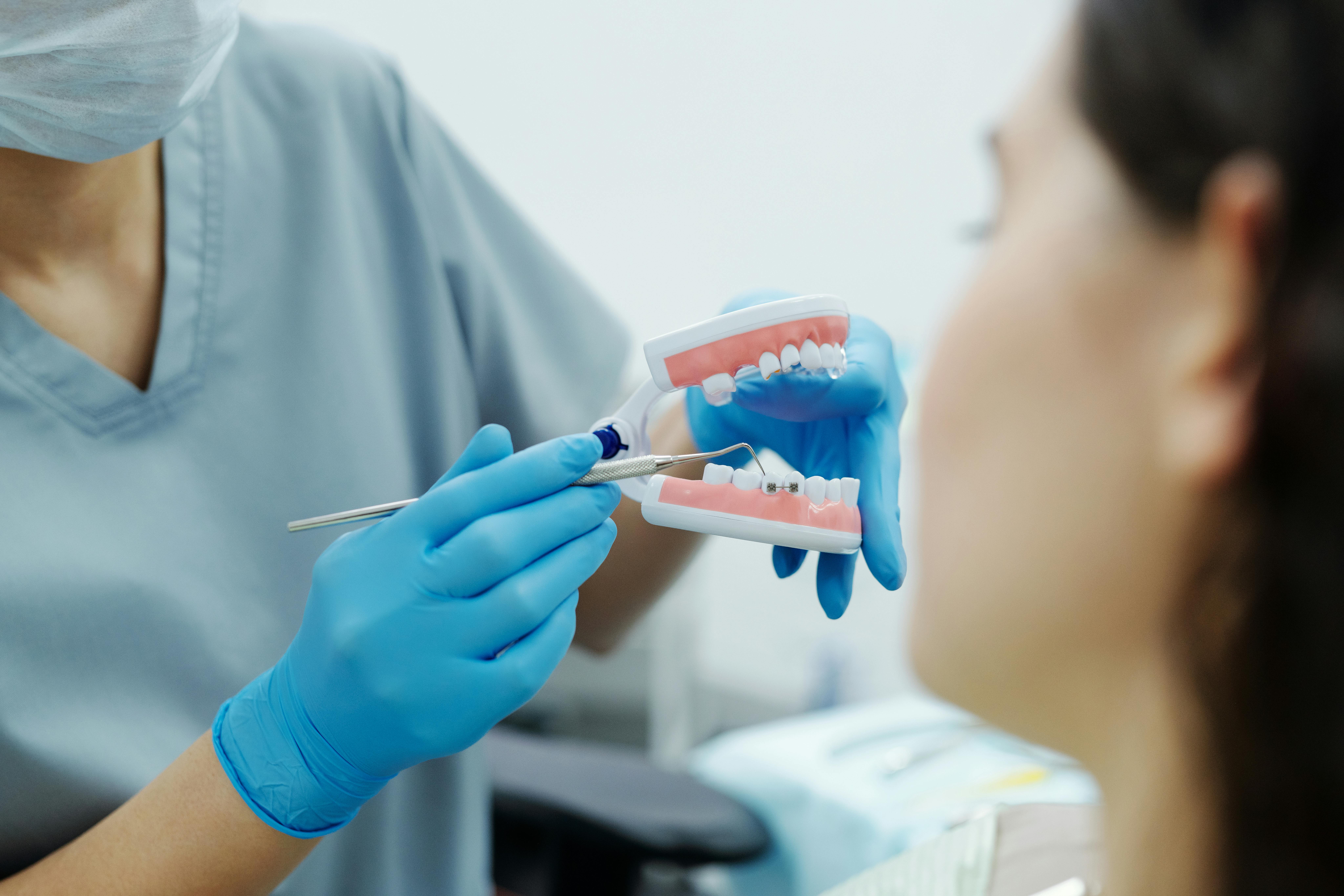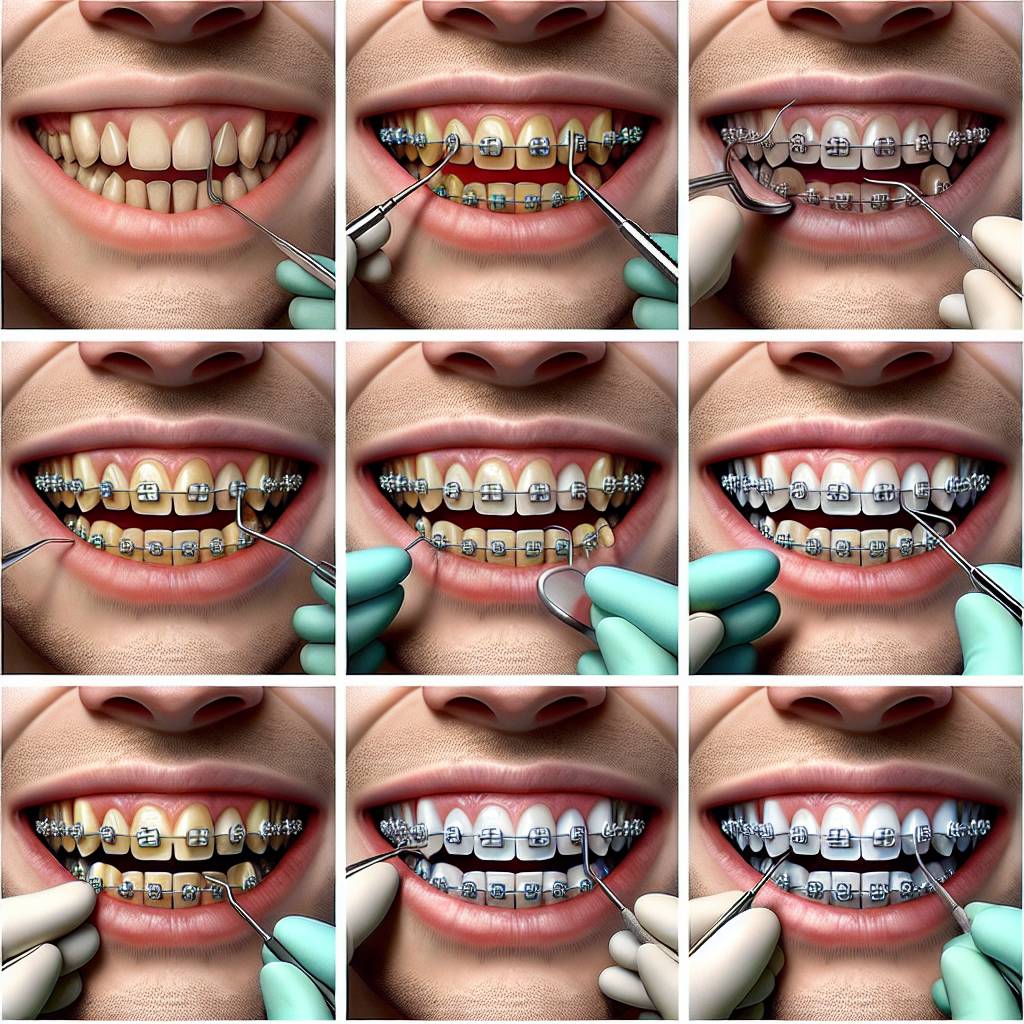Braces are a common and effective orthodontic treatment for correcting crooked teeth. Wearing braces can help to improve the alignment of your teeth and create a more aesthetically pleasing smile. But how long does it take for braces to fix crooked teeth? The answer depends on the severity of the misalignment and the type of braces used. In general, it takes anywhere from one to three years for braces to fully correct crooked teeth, although some people may see results sooner or later than this.The average timeline for braces to fix crooked teeth is typically between 18 and 24 months. However, this time frame can vary depending on the severity of the misalignment. Generally, patients see noticeable results in less than a year.
How Long Does It Take for Braces to Straighten Teeth?
The amount of time it takes for braces to straighten teeth varies from person to person. Generally, the process of straightening teeth with braces can take anywhere from 18 months to 3 years. The duration depends on the severity of the misalignment, the type of braces used, and the patient’s age. For instance, younger patients tend to respond quicker to orthodontic treatment than adults because their bones are still developing.
The type of braces used also affects how long it takes to straighten teeth. Traditional metal braces are a popular choice and can usually be expected to take between 18 months and 3 years. Ceramic braces may take a bit longer due to their smaller size and slower adjustment rate compared to traditional metal braces. Invisalign aligners also work well but require more visits with an orthodontist and may take up to two years before complete results are achieved.
Your orthodontist will be able to give you a better estimate based on your individual case after examining your mouth and taking x-rays. The best way to ensure that your treatment is completed in the shortest possible time frame is by following all instructions given by your orthodontist, wearing your rubber bands as prescribed, regularly attending all check-ups and appointments, and making sure you brush and floss daily.
By taking all these steps into consideration, you can help ensure that your treatment is successful in achieving beautiful straight teeth in no time!
What Factors Affect the Length of Time It Takes for Braces to Fix Crooked Teeth?
The amount of time it takes for braces to straighten teeth depends on several factors. First, the severity of the misalignment must be taken into consideration. If the teeth are only slightly crooked, they may take a shorter amount of time to fix than if the teeth are severely misaligned. Secondly, the type of braces used will affect how long it takes to fix crooked teeth. Traditional metal braces typically take longer than modern clear aligners, such as Invisalign. Finally, patient compliance is also an important factor in determining how long it will take for braces to fix crooked teeth. Patients who follow their orthodontist’s instructions and wear their braces consistently have better results and a shorter treatment time.
In general, orthodontic treatment with braces can range from nine to 24 months or longer depending on the patient’s individual needs and circumstances. For mild cases of orthodontic misalignment, lower-force treatments such as clear aligners may be able to improve alignment in as little as four months. Orthodontists can give individual patients an estimate of how long their treatment is expected to take based on their unique needs and goals.
Overall, there are several factors that affect the length of time it takes for braces to fix crooked teeth. The severity of misalignment, type of braces used, and patient compliance all play a role in determining how long treatment will take. However, patients should speak with their orthodontist for a more accurate estimate tailored specifically to them.
Types of Braces Used to Fix Crooked Teeth
Braces are a common orthodontic treatment used to straighten teeth that are crooked or misaligned. Different types of braces are available, depending on your individual needs. Some braces use metal brackets and wires, while others use clear plastic aligners. Your orthodontist will help you decide which type of braces is right for you.
Traditional metal braces are the most common type of braces used to correct crooked teeth. They consist of metal brackets that are glued to the front surfaces of your teeth and connected by a thin metal wire. The wire is tightened periodically to move your teeth into proper alignment over time. Traditional metal braces may be less noticeable than they once were, as today’s brackets come in a variety of sizes, shapes, and colors.
Ceramic braces are another option for correcting crooked teeth. They utilize the same method as traditional metal braces but use clear or tooth-colored ceramic brackets instead of metal ones. This makes them far less visible than traditional braces, making them an ideal choice for adults who want a more subtle look while straightening their teeth.
Lingual braces are another type of bracket-and-wire system used to correct crooked teeth. The difference with lingual braces is that the brackets and wires are placed on the backside (tongue side) of your teeth, making them virtually invisible from the outside. Lingual braces require extra skill and experience in positioning and bonding since they’re placed on the backside of your teeth, so not all orthodontists offer this treatment option.
Finally, clear aligners such as Invisalign® are becoming increasingly popular among adults seeking straighter smiles without having to wear traditional or lingual braces. Clear aligners consist of a series of custom-made trays that fit snugly around your teeth like mouth guards or whitening trays do. Each tray moves your teeth incrementally towards their desired position over time until you achieve a straight smile without brackets or wires attached to your teeth at all times!
Fixed and Removable Braces
When it comes to treating crooked teeth, fixed and removable braces are two of the most popular orthodontic treatment options. Fixed braces are a permanent form of treatment that is applied directly to the teeth, while removable braces are worn in the mouth like a retainer and can be taken out for cleaning or when needed. Both types of braces work to correct misaligned teeth and can be used in combination with other forms of orthodontic treatment such as aligners or jaw expansion.
Fixed braces are typically made from metal brackets that are cemented onto each tooth and connected with a wire. The brackets act as anchors, allowing the wire to exert force on the teeth, gradually moving them into their desired positions. Fixed braces are typically more noticeable than removable ones but provide superior results when it comes to correcting severe misalignment or bite problems. Additionally, they require fewer adjustments than removable braces, making them ideal for teen patients who don’t want to spend a lot of time in the orthodontist’s office.
Removable braces consist of plastic trays that fit snugly over the teeth and hold them in place using gentle pressure. The trays are designed to be taken out for eating, brushing, flossing, or other activities. This makes them much more convenient for active people who don’t want to be restricted by their orthodontic appliances. Removable braces also provide more flexibility when it comes to making adjustments since they can be easily adjusted by simply changing out trays as needed.
Both fixed and removable braces can be effective treatments for correcting crooked teeth but may not be suitable for everyone. It’s important to consult with an experienced orthodontist who can help you determine which type of brace is best suited for your needs and lifestyle.

Minimizing Treatment Time with Braces
Having braces is an important step in achieving a beautiful and healthy smile. Unfortunately, it can take a while for your teeth to move into their ideal position. Fortunately, there are steps you can take to minimize the amount of time you spend in braces. Here are a few tips to help you get the most out of your treatment time:
Follow Your Orthodontist’s Instructions
One of the most important things you can do to minimize treatment time is to follow your orthodontist’s instructions. Make sure you come in for all scheduled appointments and wear your rubber bands or other appliances as instructed. Taking care of your braces is essential for making sure they work properly and efficiently, so don’t skip any steps!
Choose Your Treatment Wisely
When considering orthodontic treatment, it’s important to think about which type will work best for you. Some treatments are faster than others, so make sure you discuss all options with your orthodontist. Invisalign or clear aligners are known to be faster than traditional braces, so if time is an issue, this might be a good option for you.
Be Proactive About Oral Hygiene
It’s also important to take good care of your teeth while wearing braces. Brush and floss regularly and try to avoid sugary foods that can get stuck in the brackets and cause plaque buildup. Doing so will reduce the risk of cavities or other dental problems that could slow down treatment progress.
By following these tips, you can help ensure that your treatment time with braces is as short as possible!
Maintenance During Orthodontic Treatment with Braces
Maintaining proper oral hygiene is essential when undergoing orthodontic treatment with braces. This includes brushing your teeth twice daily, flossing daily, and using an interdental brush or water flosser to clean around the brackets and wires. It is also important to avoid hard and chewy foods that can damage the braces or dislodge wires and brackets. Additionally, you should attend all your scheduled orthodontic visits for adjustments and checkups. This will ensure your treatment is progressing as planned and any issues can be addressed promptly.
It is important to take extra care of your braces by avoiding certain activities that could damage them. These activities include biting fingernails, chewing on pens or pencils, playing contact sports without a mouthguard, eating sticky or hard foods such as gum or ice cubes, and grinding your teeth. If you experience any discomfort due to the braces, it is important to contact your orthodontist right away so they can make adjustments as needed.
In addition to following these tips for proper maintenance during orthodontic treatment with braces, it is also important to keep all of your scheduled appointments with the orthodontist in order for the treatment to progress as planned. Regular visits are necessary for the doctor to monitor the progress of the treatment and ensure everything is progressing smoothly.
Can Adults Get Braces to Treat Their Crooked Teeth?
Adult orthodontics has become increasingly popular in recent years, as adults of all ages are looking to improve their smile and gain the confidence that comes with having straight teeth. Orthodontic treatment is available for adults of any age, and is often used to correct issues such as crooked teeth, overcrowding, gaps between teeth, misalignment of the jaw and other common dental problems.
Adult braces can be used to address a variety of different dental problems. Traditional metal braces are one option for treating crooked teeth, while ceramic or clear braces can be used for a subtler look. Invisalign is another popular option for adults who want an even more discreet look. Invisalign uses a series of custom-made clear aligners that fit over the teeth and gradually move them into the desired position over time.
Orthodontic treatment can be a great way to improve your smile and confidence, but it’s important to remember that it takes time for the results to become visible. Most orthodontic treatments take between six months and two years to complete, depending on the type of treatment used and how severe your dental issues are. During this time, it’s important to maintain good oral hygiene habits and attend regular checkups with your orthodontist in order to ensure that your treatment is progressing as planned.
If you’re considering adult braces as an option for treating your crooked teeth, it’s important to speak with an experienced orthodontist who can discuss all of your options with you and help you make an informed decision about which type of treatment will work best for you.

Conclusion
The time it takes for braces to fix crooked teeth varies from person to person. Depending on the severity of the misalignment, the amount of time needed for treatment can range from as little as six months up to two years or more. Generally, the longer you wear braces, the better and more stable your results will be.
It’s important to keep in mind that orthodontists often recommend wearing retainers after treatment is complete in order to maintain your newly straightened teeth. Additionally, making sure you follow your orthodontist’s instructions regarding dietary restrictions and oral hygiene is essential in order for braces to work effectively and allow you to achieve a beautiful smile.
Ultimately, how long it takes for your braces to fix your crooked teeth depends on a variety of factors including the severity of misalignment, compliance with treatment plan, and individual patient response. With proper care and attention, however, many patients are able to achieve their desired outcome in a relatively short amount of time.

